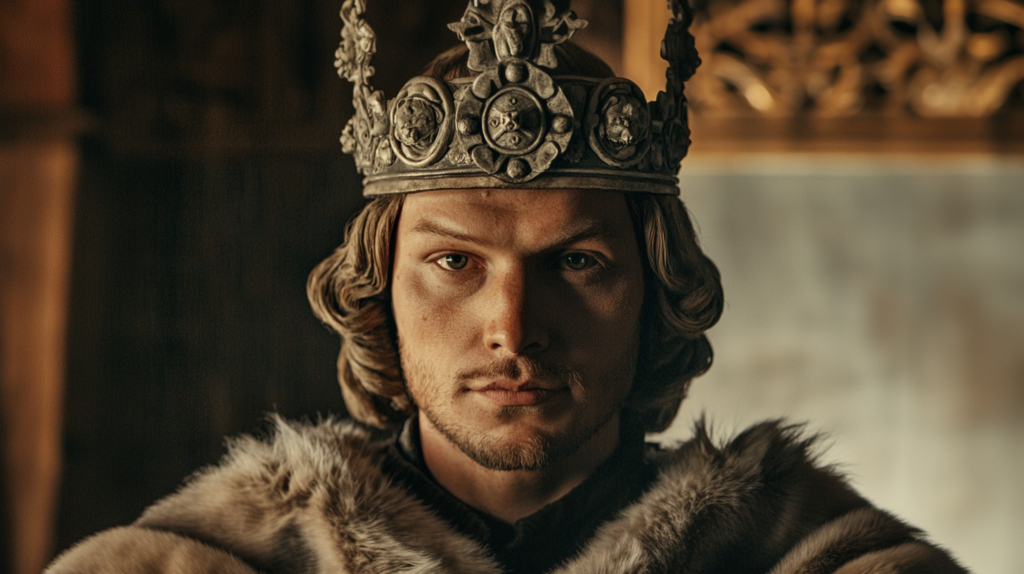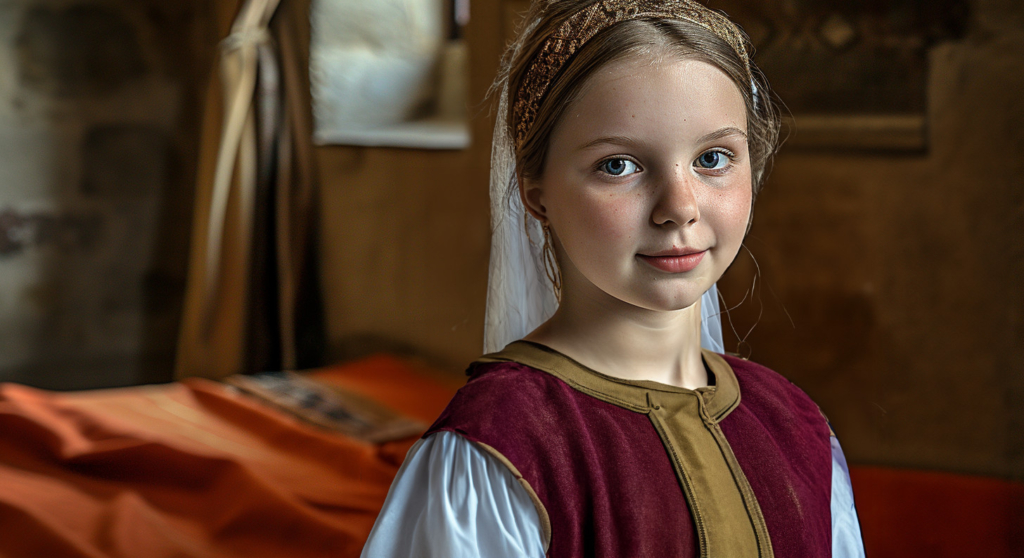Ingeborg Håkonsdatter (or Ingebjørg) was a Norwegian princess, born in 1301. She was the only child of king Håkon V (Magnusson) and queen Eufemia of Rügen.
She would play a vital role in Nordic history over the following decades. But to understand her story, we need to take a look at the political situation in the three Nordic kingdoms; Norway, Sweden and Denmark.
Her father, Håkon, was the second son of king Magnus VI and Danish princess Ingeborg Eriksdatter. When Magnus died in 1280, his eldest son Eirik became king at the young age of 12. Håkon, who was 10 at the time, became a duke. Their mother, dowager queen Ingeborg ruled as regent in their name. She was, as far as I know anyway, the first (confirmed) woman to do so in the Nordic countries.
Her backstory is important too. Her father, king Erik IV (Plovpenning) of Denmark had been killed by his own brother, Abel. As a result, she lost her lands in Denmark, and she nursed a hatred towards the new king, which her sons inherited. She died in 1287, but the feud with Denmark would continue for many years.

Some years later, king Eirik died as well. He had a daughter, also named Ingeborg, but Norwegian law didn’t allow female succession, so Håkon (above) became king in 1299. He married Eufemia of Rügen the same year, and 1301 ”our” Ingeborg was born. A year later Håkan changed the line of succession, so that if – and only if – a son or other male relative didn’t exist, the throne would go to a daughter. So at one year old, our Ingeborg became crown princess of Norway.
So that’s Norway during Ingeborg’s childhood. But we also need to understand the situation in Denmark and Sweden, as the political situation and shifting alliances would have a huge impact on her life.
As mentioned, Ingeborg’s great grandfather, Danish king Erik was murdered in 1250 by his own brother, Abel. Abel however were not long-lived on the throne and died/was murdered in 1252, and a third brother – Christoffer – was made king. When our story begins around the year 1300, his grandson, Erik Menved was king. But the enmity between Norway and Denmark remained.
Erik Menved’s sister Margrete was married to the Swedish king, Birger.

Birger had two younger brothers, dukes Erik and Valdemar, and they – especially Erik – will play a very important part in our story.
Ingeborg’s father, king Håkon of Norway, saw the Swedish king’s marriage to the Danish princess and the close relationship between the two countries as a threat. He therefore reached out to duke Erik, and offered him Ingeborg’s hand in marriage in 1302 – when the duke was 20 years old and Ingeborg only one!
Since Ingeborg had been made crown princess of Norway, her future husband would be king, and their son inherit the throne. This suited the ambitious duke Erik perfectly, and the two were betrothed. Now Håkon had an alliance with Erik, who was very powerful, while king Birger had his alliance with the Danish king. The pieces were set for the next move.
Now that the stage is set, and the background explained – let’s return to Ingeborg’s story.
We don’t know very much about Ingeborg’s early years. She grew up in the royal court in Oslo, probably with her cousin – also named Ingeborg. When children turned seven, they were considered old enough to start their education.

We can assume that Ingeborg got the same education as other princesses and noble girls at the time. Girls were raised to be wives to some important lord, and as such she must know how to run a large household. Ingeborg therefore had to learn to read and count, to oversee the servants and to be her husband’s advisor and support.
If her husband was absent, or died, she was expected to govern in his stead – at least if they didn’t have any grown-up children. Therefore, Ingeborg was probably raised to rule.
She also had powerful women to look up to. Her mother, Eufemia, held a lot of influence. And her paternal grandmother, who Ingeborg was named after, was the first female regent in the Nordic countries.
While Ingeborg was growing up, the political games took many turns. For a while, her father broke her betrothal to duke Erik, and she was instead engaged to the Swedish king’s son, Magnus. But things can change quickly, and in 1310 she was again betrothed to Erik. Her mother is said to have been a driving force behind this. She planned and prepared the wedding, but sadly, she never got to see her daughter get married. Eufemia fell ill and died in the spring of 1312.
Ingeborg was devastated, but the wedding went ahead as planned. In September that year a double wedding was held in Oslo. 11-year-old Ingeborg married the 20 years older Erik, and her cousin, Ingeborg, was married to his younger brother, duke Valdemar.
After the wedding, a new phase began in Ingeborg’s life. Read about it in the next post!
Sources:
Högberg, Stefan. Svenska kvinnor historien glömde. (2019)
Karlsson, Thomas. Hertiginnan Ingeborgs Västsverige under 1300-talet. (2020)
Skeie, Tore. Jungfrun från Norge. (2014)

